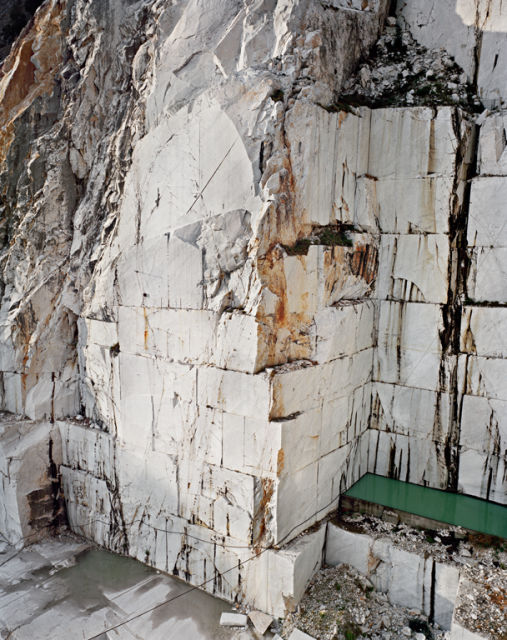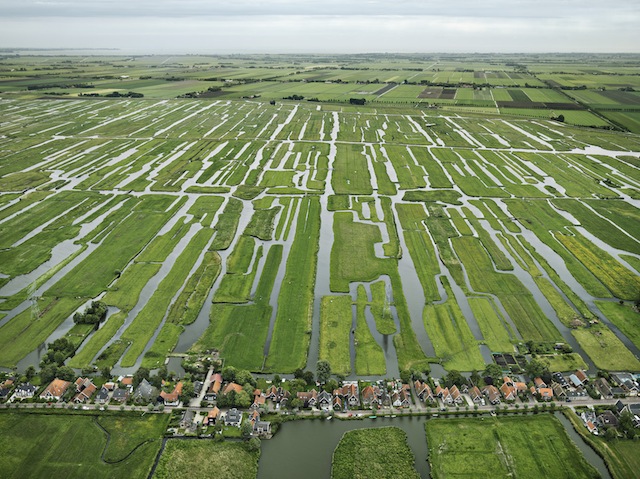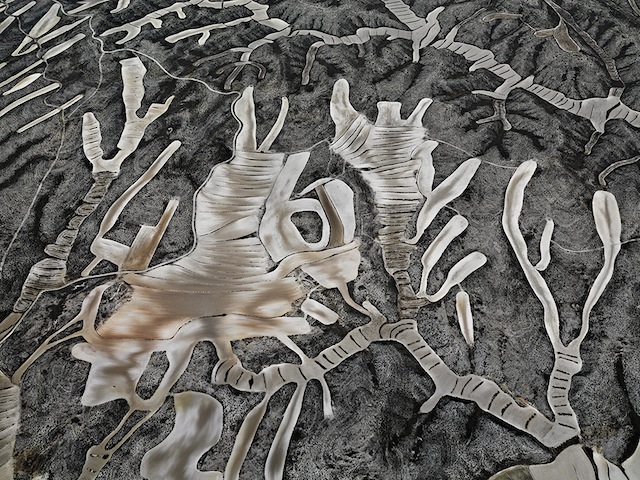Growing up in an industrial town in southern Ontario, where his father worked at a local General Motors plant, photographer Edward Burtynsky witnessed a side of manufacturing and consumer culture that many don’t experience.
His appreciation and understanding of industrial scenery, cultivated at a young age, has led to a career of award-winning large-scale landscape photography. In addition to numerous art and environmentalism accolades, he is the 2015 recipient of the David Brower Center’s Art/Act Award, where a solo exhibition of his work is currently on view.

The small but substantive exhibition chronicles several subjects Burtynsky has explored throughout his career, including quarries, shipbreaking, the petroleum industry, mining and water. Many of these works appear as rather blunt political critiques. One image, for example, documents an expanse of oil derricks on the edge of the Caspian Sea in Azerbaijan. The barren land, the industrial stalagmites and the streams that meander through the site conspire to create an image that is almost apocalyptic.
Considered alongside Burtynsky’s images of Los Angeles’ sprawling and tentacular highway system, or toxic oil tanker shipbreaking sites, it is easy to see this photograph as a charge against modernity. But these associations might actually speak more to what I bring as a viewer than the artist’s intentions or an inherent political message. Burtynsky likenshis work to a Rorschach test, noting that a miner, an environmentalist, an art historian and a casual viewer might all see something different in a given image.
He also said that when he began this body of work over 30 years ago politics and social change weren’t motivating factors. He was more interested in trying to document a moment in history characterized by rapid population growth and resource extraction. Over time, however, his awareness of the consequences of this epoch gave the works political meaning.

Though his photographs do not transcend politics, their openness and nuance may be more powerful than works meant to shock viewers into action. Much of Burtynsky’s work focuses on China, including manufacturing and the construction of the mammoth Three Gorges Dam.
A photograph from this series is one of the most absorbing works on view at the Brower Center. The unidentifiable scene of pirouetting brown mist resembles Pillars of Creation, the Hubble Space Telescope’s famous photograph of interstellar gas. A few bushes or trees are visible, suggesting some terrestrial scene, but only the exhibition’s wall text and a Google search identify the occasion as millions of tons of silt rushing through the Xiaolangdi Dam’s flood gates.
But Burtynsky is not a celestial photographer, and no matter how awesome or puzzling the image, it clearly depicts the incredible power humans wield in shaping our landscape. Other images in the exhibition document humanity’s relationship with water, a subject of special importance to Californians in 2015. These works are beautiful and non-accusatory, but point to our unmistakable impact on the planet.

Burtynsky’s aerial photographs of the Colorado River Delta in Baja California and dryland farming in Spain could masquerade as abstract paintings. The photographs have a metallic shine, with organic-looking forms reaching across the Spanish terrain and brown, blue and turquoise blocks of color covering the Baja landscape. Such formal considerations allow viewers to enter Burtynsky’s work without predetermination or threats of evangelism.
Burtynsky’s subtlety gives viewers a glimpse behind the industrial curtain. The artist reports that his relationships with the Chinese and Indian governments improved as the nations came to appreciate the openness of his work. By exposing the world that lies behind our consumer electronics, automobiles, produce or even a cup of water, Burtynsky invites reflection from all viewers, not just those predisposed to seek out environmental or anti-capitalist causes.
Art/Act: Edward Burtynsky is on view at the David Brower Center in Berkeley through Feb. 4, 2016. For more information visit browercenter.org.